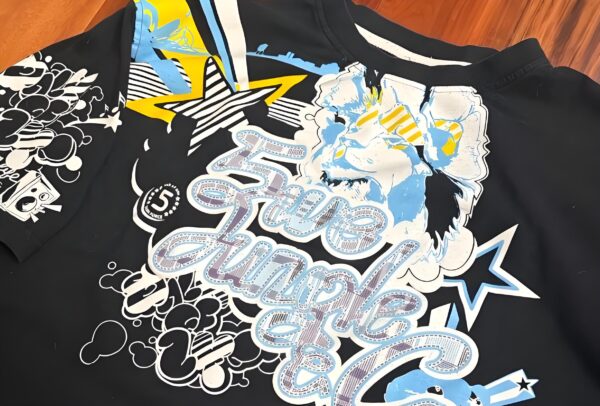In the ever-evolving world of textile printing, two techniques have garnered significant attention: Direct-to-Garment (DTG) and Direct-to-Film (DTF) printing. Both methods offer unique advantages and are suitable for different types of businesses. In this article, we’ll explore the differences between DTG vs DTF printing, helping you determine which is the better option for your business.
Understanding the Technology of Both Methods
To make an informed decision between DTG vs DTF printing, it’s essential to understand the technology behind each method.
DTG Printing:
Direct-to-Garment printing involves the use of specialized inkjet technology to print designs directly onto the fabric. The process starts by pretreating the garment, which helps the ink adhere better. After printing, the garment is cured with heat to set the ink. DTG printing is known for producing high-quality prints with vibrant colors and fine details, making it ideal for printing intricate designs on a wide range of fabrics. One of the primary advantages of DTG printing is its ability to produce high-resolution images with a wide color gamut, ensuring that even the most complex designs can be accurately reproduced on fabric.
DTF Printing:
Direct-to-Film printing, on the other hand, involves printing a design onto a special film, which is then transferred onto the garment using heat and pressure. Unlike DTG, DTF can be used on a broader range of materials, including cotton, polyester, nylon, and more. The process is slightly more complex as it involves additional steps, such as applying adhesive powder to the printed film before transferring it to the fabric. DTF printing is particularly advantageous for businesses that need to print on a variety of materials, as it allows for greater flexibility in the types of garments and items that can be produced.
When considering DTG vs DTF, both methods have their unique strengths. DTG vs DTF printing involves different approaches, but each has its advantages depending on the material and design complexity. For instance, DTG might be more suitable for businesses focusing on detailed, colorful designs on cotton-based fabrics, while DTF could be more appropriate for those looking to diversify their product offerings with prints on various materials.
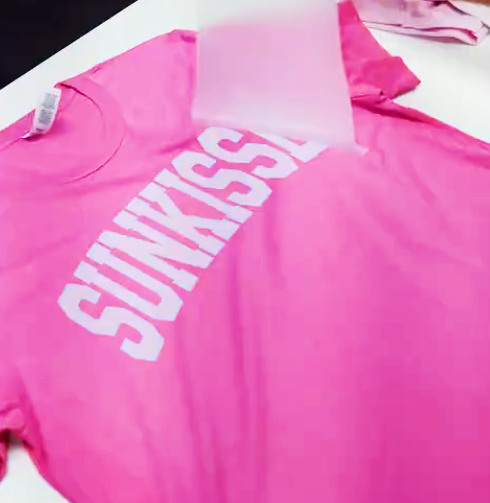
White Ink and Why it Matters
White ink plays a crucial role in both DTG vs DTF printing, especially when printing on dark or colored garments.
DTG Printing:
In DTG printing, white ink is often used as a base layer on dark fabrics to ensure that the colors on top are vibrant and accurate. This is particularly important because, without a white base, the colors can appear dull or washed out on darker garments. However, the use of white ink can increase production costs, as white ink is typically more expensive and requires precise application to avoid issues like clogging in the print heads. Additionally, the efficiency of white ink usage in DTG printing has been a subject of continuous improvement, with newer machines being designed to reduce ink waste and enhance print quality.
DTF Printing:
DTF printing also utilizes white ink, but it is applied differently. In DTF, white ink is printed as the final layer on the film before it is transferred to the garment. This layer acts as the base when the design is pressed onto the fabric, ensuring that the colors remain vibrant regardless of the material’s color. Since DTF can be used on a wider variety of materials, the effective use of white ink in this method is essential for maintaining print quality across different fabrics. Furthermore, DTF printing’s application of white ink helps in achieving consistency in print quality, regardless of the fabric’s color or texture.
Both DTG vs DTF rely on white ink for high-quality prints, but the way it is used and its impact on the overall printing process differs, making it a crucial factor in choosing the right method for your business. When evaluating DTG vs DTF for your business, consider how each method’s approach to white ink application might affect your production costs, efficiency, and overall print quality.
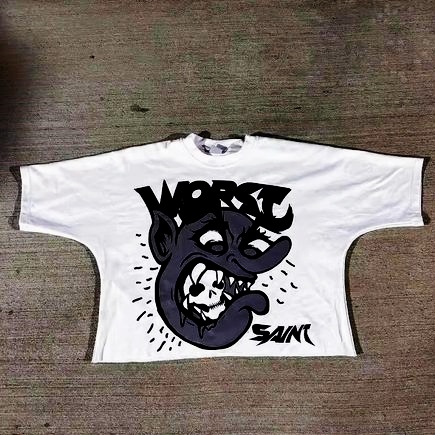
Scaling Up with DTG and DTF
When it comes to scaling your business, understanding the production capabilities and limitations of DTG vs DTF printing is essential.
DTG Printing:
DTG printing is well-suited for small to medium-sized orders, particularly when high-quality, detailed prints are required. However, the process can be slower compared to other methods like screen printing, especially for large orders. The need for pretreatment and curing adds to the production time, making DTG less efficient for bulk orders. That said, DTG printers have advanced over the years, with newer models offering faster print speeds and better efficiency. These advancements include automation features that reduce the time needed for pretreatment and drying, making DTG more competitive for mid-sized runs.
DTF Printing:
DTF printing, in contrast, offers greater scalability due to its faster production process. Once the design is printed on the film, it can be quickly transferred to multiple garments, making it a more efficient option for larger orders. Additionally, DTF printing’s versatility in terms of material compatibility means that businesses can cater to a broader range of customer demands, from custom T-shirts to promotional items like bags and hats. The scalability of DTF printing is further enhanced by the relatively low cost of consumables, which makes it a viable option for businesses looking to increase their production volumes without significantly increasing their costs.
When considering DTG vs DTF for scaling, DTF printing may offer more flexibility and efficiency, especially when handling larger orders or working with various materials. However, for businesses that prioritize print quality and detail, DTG printing remains a strong contender, particularly for smaller batches. The choice between DTG vs DTF becomes even more critical as you plan for growth, as each method’s scalability and efficiency will impact your ability to meet increased demand while maintaining quality standards.
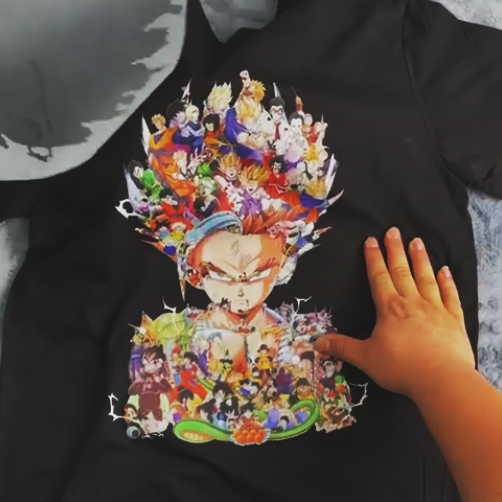
Choosing the Right Print Solution for Your Print Shop
When choosing between DTG vs DTF printing, several factors come into play, including the type of products you intend to print, your target market, and your budget.
DTG Printing:
- Pros:
- High-quality, detailed prints suitable for intricate designs.
- Ideal for printing on cotton and similar fabrics.
- Environmentally friendly due to water-based inks.
- Lower setup time for small batches.
- Cons:
- Higher costs due to pretreatment and white ink usage.
- Slower production speed, making it less efficient for large orders.
- Limited fabric compatibility compared to DTF.
DTF Printing:
- Pros:
- Versatile and can print on various materials.
- Faster production process, suitable for scaling up.
- Lower costs for larger orders.
- No pretreatment required, reducing setup time.
- Cons:
- Requires additional steps (adhesive powder application).
- Initial setup costs for DTF printers and films can be high.
- Potential for lower print resolution compared to DTG.
When analyzing DTG vs DTF, it’s essential to weigh these pros and cons to determine which printing method aligns best with your business objectives. Additionally, considering the long-term implications of your choice is crucial, as each method’s strengths and weaknesses will play a significant role in your ability to adapt to market trends and customer demands.
For example, if your business is centered around producing high-quality, custom apparel with intricate designs, DTG may be the better option. On the other hand, if your focus is on offering a wide range of products, including non-traditional items like bags or hats, DTF’s versatility might give you the edge. Understanding these nuances is key to making the right choice between DTG vs DTF.
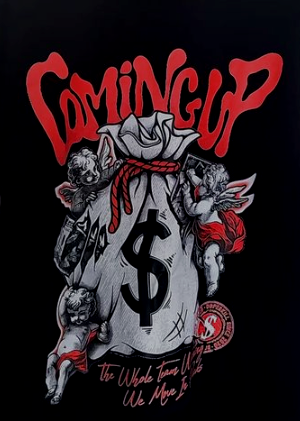
Cost Considerations: DTG Printer vs. DTF Setup
The cost of setting up a printing business using DTG vs DTF methods varies, and understanding these costs is crucial for making the right investment.
DTG Printer Cost:
The cost of a DTG printer can range from $10,000 to $30,000, depending on the model and features. Entry-level DTG printers are more affordable but may lack some advanced features needed for higher production volumes. Additionally, the ongoing costs of ink, particularly white ink, and maintenance should be considered when budgeting. The cost of consumables, such as pretreatment solution and replacement print heads, should also be factored into your overall investment, as these can add up over time.
DTF Setup Costs:
DTF setups are generally more affordable in terms of the printer itself, with prices ranging from $5,000 to $15,000. However, additional costs include the special films, adhesive powder, and a heat press for transferring the designs. While the initial setup costs may be lower, the need for multiple consumables can add up over time. DTF printing also requires a dedicated space for storing and applying adhesive powder, which might necessitate additional investment in ventilation or workspace modifications.
Both DTG vs DTF require significant upfront investment, but DTF may offer a lower barrier to entry, especially for businesses looking to offer a wide range of products. However, it’s important to consider the total cost of ownership, including ongoing expenses like consumables, maintenance, and potential upgrades. By carefully evaluating these factors, you can make an informed decision on whether DTG vs DTF is the more cost-effective solution for your business in the long run.

DTG Printing vs. Screen Printing: Where Does DTF Fit?
While this article focuses on DTG vs DTF, it’s worth briefly comparing DTG printing to traditional screen printing, particularly in the context of where DTF fits in.
Screen Printing:
- Pros:
- Cost-effective for large batches.
- Durable prints, especially with plastisol ink.
- Ideal for simple designs with few colors.
- Cons:
- High setup costs, especially for multicolor designs.
- Not suitable for detailed or gradient prints.
- Limited to certain materials.
DTG vs DTF Compared to Screen Printing:
DTG offers a modern alternative to screen printing, especially for businesses that need to print detailed designs in smaller batches. DTF, while newer, bridges the gap by providing the versatility of screen printing with the detail-oriented approach of DTG. DTF’s ability to print on various materials without extensive setup makes it a strong competitor to traditional screen printing methods.
Moreover, DTF printing’s ability to produce vibrant prints with minimal setup makes it an attractive option for businesses that require quick turnaround times and high flexibility. In contrast, DTG’s ability to produce high-quality, detailed prints makes it suitable for premium products where quality is a top priority. By understanding where DTG vs DTF fit in comparison to screen printing, you can better position your business to meet diverse customer needs.
Conclusion
In conclusion, choosing between DTG vs DTF printing ultimately depends on your business’s specific needs. DTG is ideal for businesses focusing on high-quality, detailed prints, particularly on cotton garments. On the other hand, DTF offers greater versatility and scalability, making it a better option for businesses looking to expand their product range and cater to larger orders. whether you choose DTG or DTF, both technologies offer unique benefits. By carefully considering factors such as cost, scalability, print quality, and material compatibility, you can determine which method aligns best with your business goals.




